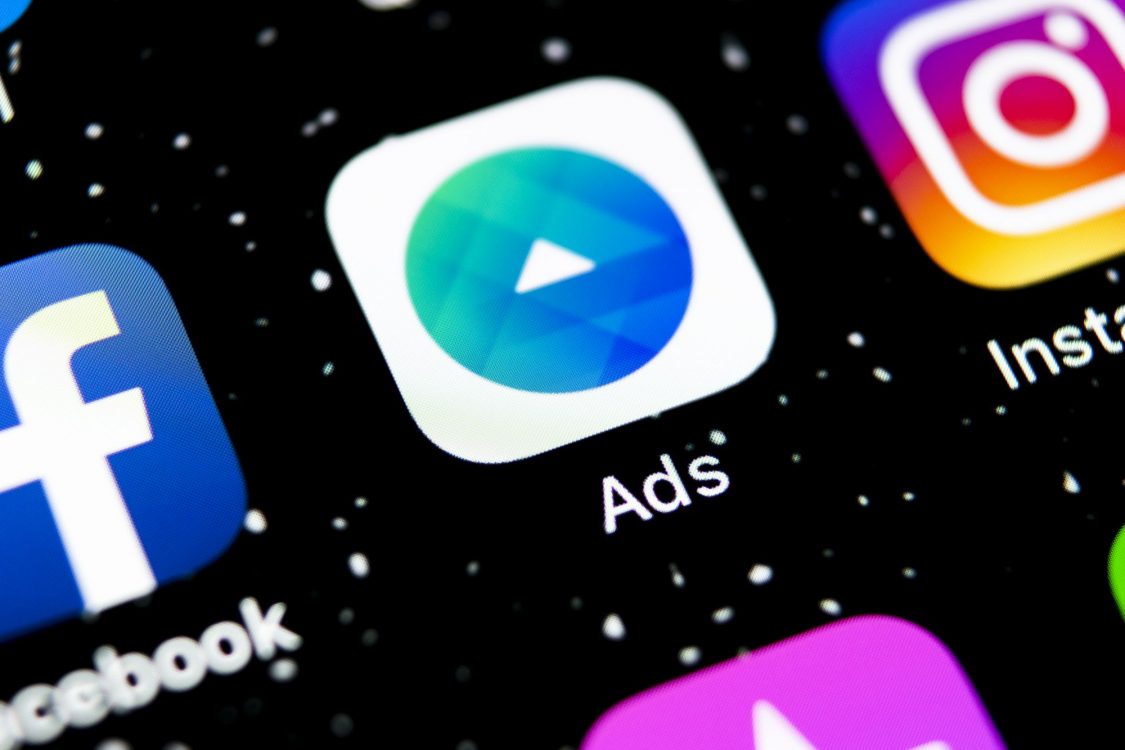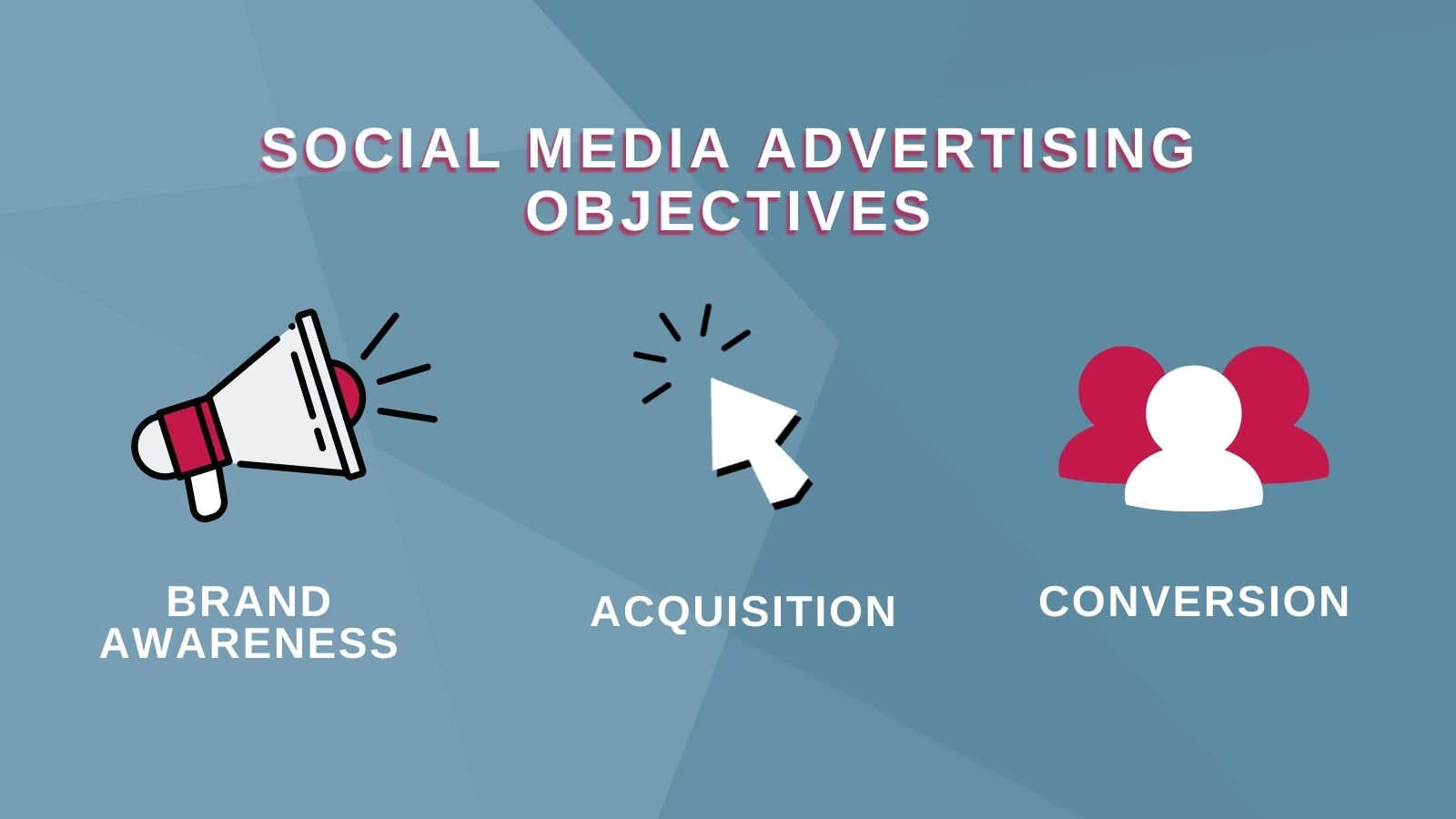
Read time: 5 mins
With more than 3.6 billion people using social media globally, and 53 million active users in the UK alone, the importance of brands having a social presence to reach a larger audience is stronger than ever.
However, as brands continually become more active on social media, it creates challenges such as struggling to stand out amongst the crowd, maintaining audience retention and building trust.
To overcome these challenges, a new tool was developed. Social media advertising allows businesses to reach target audiences, standing out from the competition so their content is seen by those who matter most. But it comes at a price. So how do you know when and how to best use your marketing budget rather than just boosting every post and hoping for the best?
Join me as I cover the different campaign objectives you can use for your social media advertising activity and offer insights into how and when to use them.

The key benefit of social media advertising is the ability to create a highly targeted campaign, so that only the people who fall within the parameters you have selected, whether it be people within specific locations, interests, job titles and/or ages, are served your ad.
It’s just as important to choose the right channel for your ad campaigns, as different platforms have different targeting options. With LinkedIn’s corporate audience and targeting based on company industry, size, job title, to name a few, it is particularly effective for B2B campaigns. Read more about the benefits of LinkedIn advertising on our blog here.
On Facebook and Instagram advertising, there are more interest-based targeting options, making it much more effective for the majority of B2C campaigns. Twitter, on the hand, is very effective for reactive ads, targeting conversations through hashtags so you can jump on trends.
Increasing brand awareness is important throughout the marketing funnel, but an awareness-only campaign should be reserved for when action is not required. Use this campaign type only to let your content be seen and heard by as many people in your target audience as possible – think for activity such as re-brands, coming soon and launches, updates and announcements.
As these campaigns aren’t optimised for actions such as engagement, website traffic or video views, it’s important to make sure the content you use is visually engaging so that it has the best possible chance at staying top-of-mind. Video is king in this respect, with social media channels constantly introducing more ways to share video content organically, which can also be boosted through paid advertising.
Take LinkedIn for example – it found that its users are 20 times more likely to re-share a video post, which increases the reach of an ad post further. Read our article on why video should be in your marketing strategy for more insight on this powerful format!
Consideration objectives include action-drivers such as link clicks, engagement (e.g. commenting, liking, sharing) and video views, and is the next step in the marketing funnel. This audience may not be warm enough yet to become a client or customer, so you need to feed them insight-driven, informative and valuable content.
The action that you want your audience to take to access this value-driven information is up to you. For example, it could be as simple as watching a video to completion and engaging with a post, or actions that take them away to a website such as clicking through to read a blog, view a service page, or download a brochure.
There are further benefits to optimising for an action though. Firstly, while you will be paying per key result for the specified action (e.g. cost per click, cost per engagement, cost per download), you will also benefit from increasing brand awareness at the same time as a by-product of the ads being served to your target audience.
This is why most likely than not you will be best placed to choose a consideration campaign, rather than an awareness-only objective. Secondly, by running consideration campaigns such as website traffic or engagement, it means you can then retarget this audience or create lookalike audiences based on the people who took the specified action.
This brings us to the final ad objective you can use, conversions.
Conversion campaigns are great to use for achieving sales, registrations, downloads, job vacancies and leads. It’s important to note that depending on the industry your business serves, and whether you’re in the B2B or B2C sphere, you may need a longer awareness and consideration phase before jumping into doing conversion ads.
For example, if a well-known theatre wanted to promote half-price tickets targeting an interest-based audience interested in the performing arts and theatre, they will have a lot more success optimising for conversions straight away (in this case, purchases), as it’s low cost and low risk for their audience.
However, if a law firm was looking for new clients, it would need to consider running a longer phase of awareness and consideration campaigns to build trust and authority, using video content, blog articles and informative content in its ads to build brand awareness and website traffic. Once the conversion phase has been reached, the ads could then optimise for lead generation, where the person would need to input their contact details, or form fills such as filling out a form on a contact page.
To fully take advantage of your efforts at bringing people through the funnel with your ad campaigns, consider using lookalike audiences and website retargeting audiences. A few ways you can do this is by generating the audience from people who have watched your video content or engaged with a previous ad post, people who have visited your website and by uploading a list of contacts from your CRM. If you’ve ever visited a website then been served an ad on social media moments later, this is exactly what that brand is doing – using website retargeting!
Social media advertising is most effective when optimising for the right objective. Before you launch a campaign, be sure to first consider what your goal is, what action you want your audience to take, and what channel or channels matches the targeting options you require.
Remember that your target audience (unless using website retargeting) will be at different stages of the funnel, so it’s important to consider running an awareness and/or consideration phase prior to running conversion campaigns.
Finally, it’s just as vital to ensure your ad content is highly engaging and attention-grabbing, with video being an excellent way to draw people’s attention as they’re scrolling. But there’s no one size fits all with advertising, so be sure to A/B test your creatives to see what works best for your audience.
At Brand8 PR, we have extensive experience in devising paid social media marketing strategies that drive engagement, boost brand awareness, and inform purchasing decisions. Find out how we can help generate high-quality social ads for your brand by contacting our social media manager Emily on t: 07939 374 364 or e: emily.neilsen@brand8pr.com